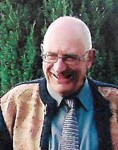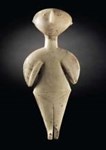Born into a Norwegian shipbuilding family, he was inspired by Kaiser Wilhelm II to become a naval officer but on graduating from naval college in 1910 he was, at Fridtjof Nansen’s recommendation, recruited by Scott as a skiing expert for his Terra Nova expedition.
Gran was later part of the 11-man search party that found the tent containing the frozen bodies of Scott, Wilson and Bowers. For his role in the expedition he was awarded the Polar Medal by George V.
It was on the return journey from Antarctica that Gran met and was enthused by the actor-manager, soldier and aviator Robert Lorraine MC, DSO to take up new adventures.
A flying first
Just one year later, having trained to become a pilot at Louis Blériot’s flying school in Paris, Gran became the first person to fly across the North Sea in a heavier-than-air machine.
When, just days later, Britain went to war, Gran, already an officer in the Norwegian Army Air Service, volunteered for the Royal Flying Corps, but his application was rejected on the grounds of Norway’s neutrality.
Undaunted, Gran signed on instead as a Captain Teddy Grant from Canada. By 1917 he had gained a commission under his own name and was flying Sopwith Camels on the western front, where he was soon awarded a Military Cross for conspicuous gallantry.
Gran, who also claimed to have shot down Hermann Göring in a dogfight, retired in 1921 from the RAF, as it had by then become, and devoted the rest of his life primarily to lecturing and writing.
His medals and awards were sold by Christie’s for £65,000 and his two autograph journals of Scott’s Terra Nova expedition, in Norwegian and occasionally English, sold at £40,000.
These journals are largely unpublished, but he did draw on these and other, now unlocated journals for his published ‘Antarctic Journal’, in which passages of a personal or overtly critical nature were suppressed.













